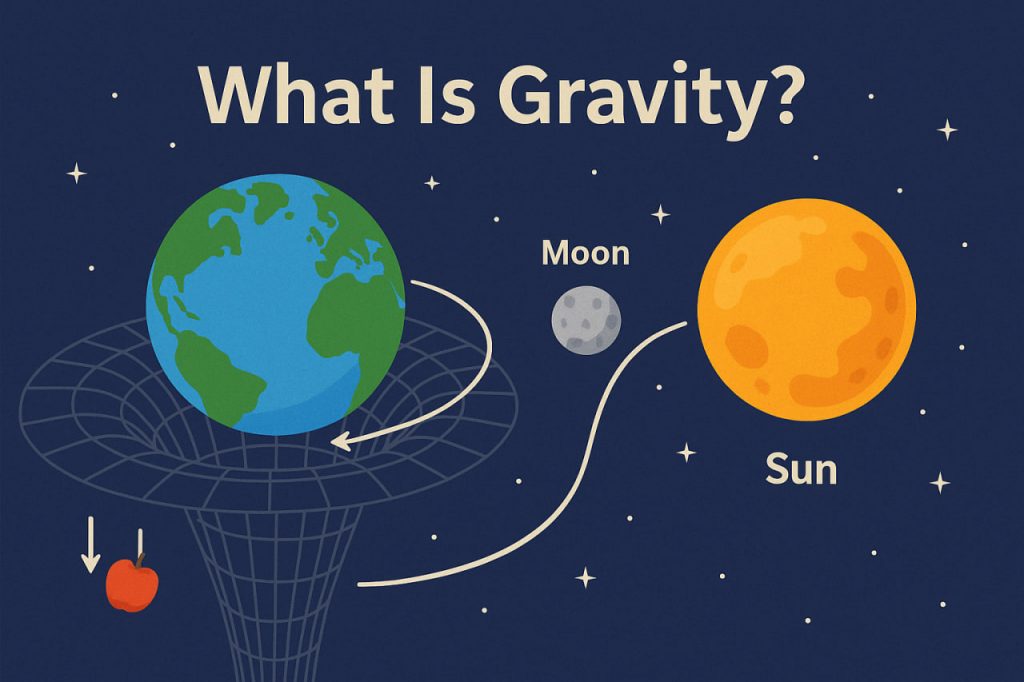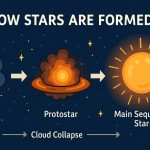Gravity is one of the most fundamental forces in nature. Though invisible, it affects everything with mass—from the fall of an apple to the orbits of planets and the formation of galaxies. Gravity gives structure to the universe and plays a crucial role in shaping everything we see.
How Gravity Works
Gravity is the force of attraction between two objects with mass. The more massive an object is, the stronger its gravitational pull. The farther apart two objects are, the weaker the force between them.
- Earth’s gravity keeps us grounded and makes objects fall.
- The Moon’s gravity causes ocean tides.
- The Sun’s gravity keeps planets in orbit.
- Gravity holds stars together to form galaxies.
A Brief History of Gravity
Isaac Newton (1600s)
Newton was the first to describe gravity scientifically. He proposed that every object in the universe attracts every other object with a force proportional to their masses and inversely proportional to the square of the distance between them. This is known as Newton’s Law of Universal Gravitation.
Albert Einstein (1905–1915)
Einstein revolutionized our understanding of gravity with his Theory of General Relativity. He described gravity not as a force, but as the curvature of spacetime caused by mass and energy. According to this theory, massive objects like the Sun bend the space around them, and other objects follow curved paths in this distorted space.
Everyday Examples of Gravity
- You stay on the ground instead of floating into the sky.
- A ball thrown into the air eventually comes down.
- Satellites stay in orbit because Earth’s gravity pulls them in while their motion keeps them from falling.
- Astronauts in space experience microgravity, not because there’s no gravity, but because they’re in free fall.
Gravity in the Universe
- Stars form when gravity pulls gas and dust together.
- Planets orbit stars due to gravitational attraction.
- Black holes are regions where gravity is so strong that nothing—not even light—can escape.
- Gravitational waves, predicted by Einstein and detected in 2015, are ripples in spacetime caused by massive cosmic events like merging black holes.
Why Gravity Matters
Without gravity:
- There would be no planets, stars, or galaxies.
- The Earth wouldn’t orbit the Sun, and there would be no life.
- The atmosphere would drift away into space.
Gravity is essential to life, structure, and the evolution of the universe.
Conclusion
Gravity may be invisible, but it’s one of the most powerful and essential forces in existence. From keeping your feet on the ground to shaping the cosmos, gravity influences everything with mass and energy. Understanding it helps us unlock the mysteries of space, time, and existence itself.
Unfortunately, this is only our current understanding of what gravity actually is.
Glossary
- Mass: The amount of matter in an object.
- Orbit: The curved path of one object around another due to gravity.
- Spacetime: The four-dimensional fabric combining space and time.
- General Relativity: Einstein’s theory describing gravity as the curvature of spacetime.
- Gravitational Wave: A ripple in spacetime caused by massive moving objects.


